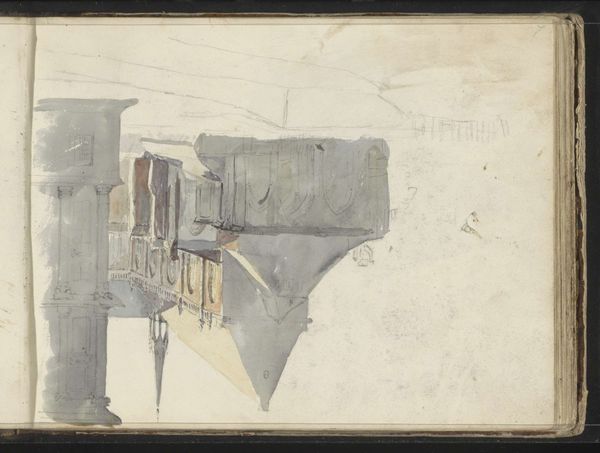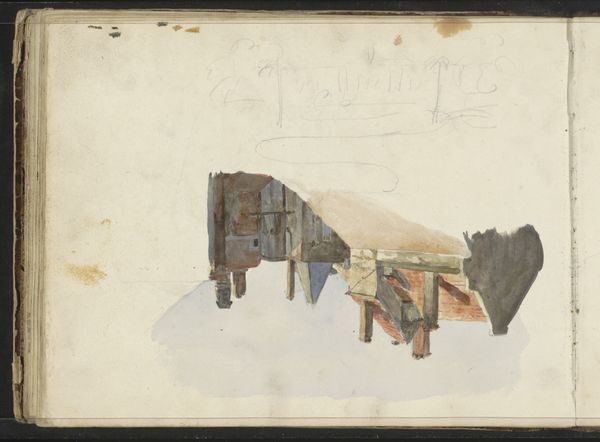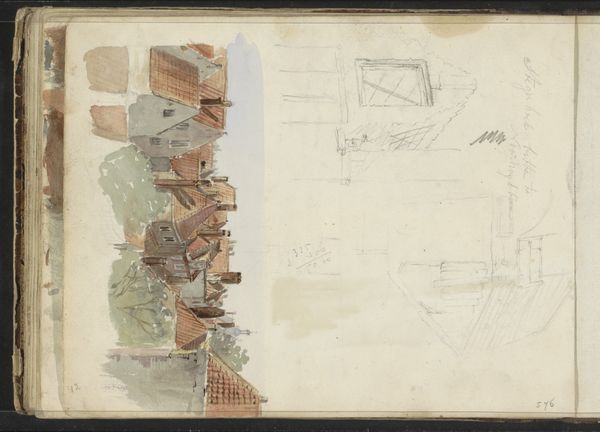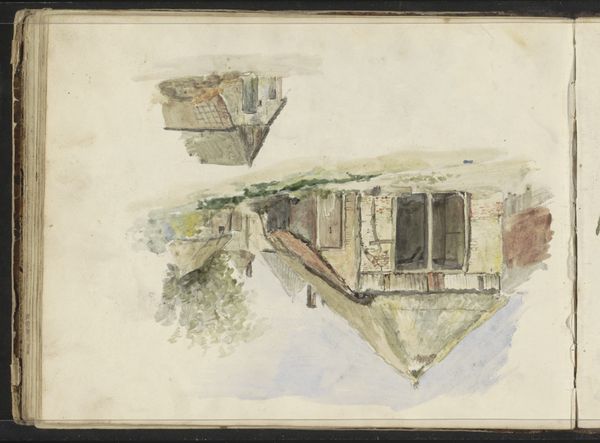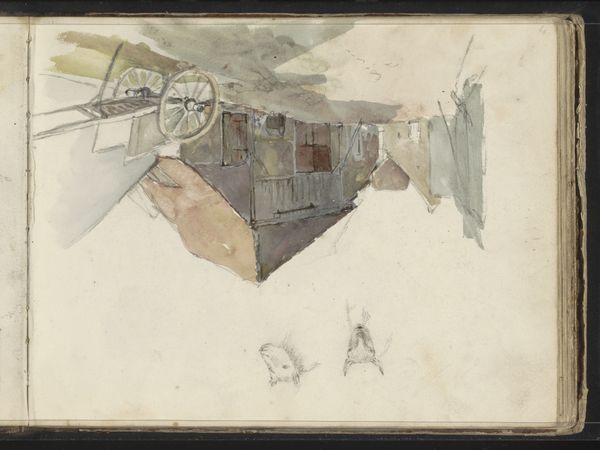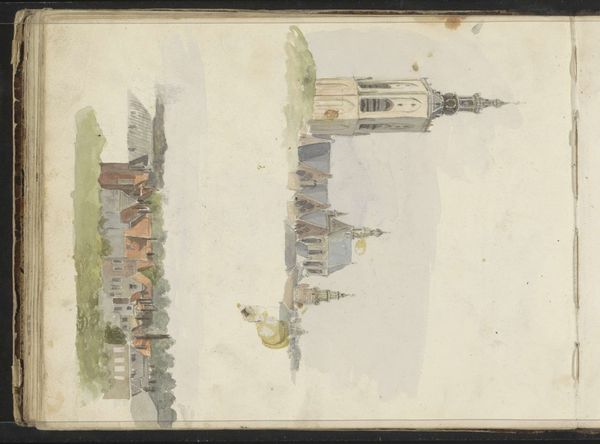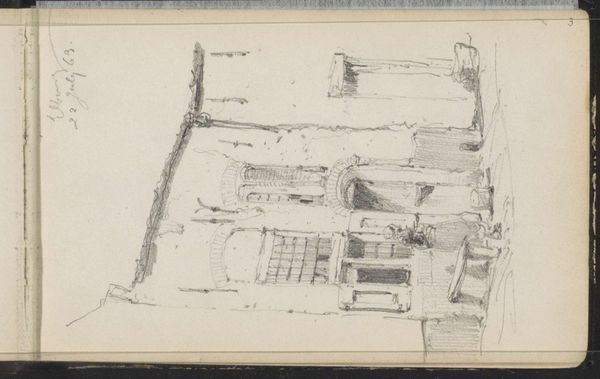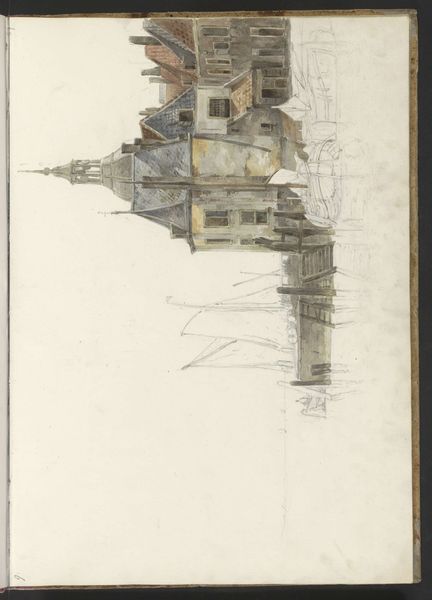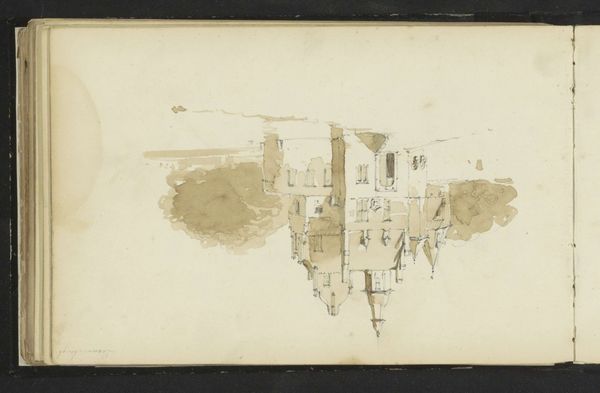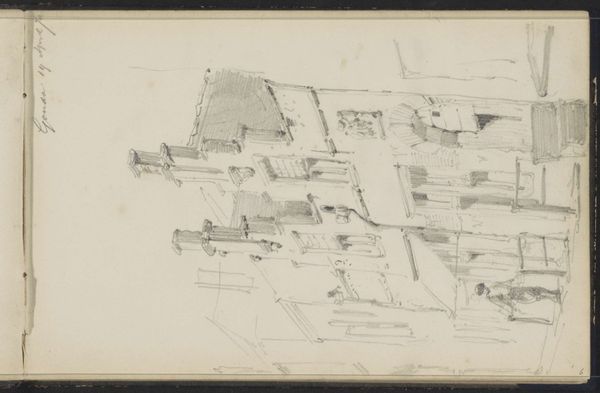
watercolor, architecture
#
landscape
#
watercolor
#
mixed media
#
watercolor
#
architecture
#
realism
Copyright: Rijks Museum: Open Domain
Curator: At first glance, I’m drawn in by the fragmented feeling, almost like a dreamscape. Editor: Precisely. What we are looking at is entitled “Details van architectuur aan het Buitenhof te Den Haag”, which translates to “Details of architecture at the Buitenhof in The Hague”, and it’s from between 1822 and 1893, authored by Willem (II) Troost. It uses watercolors in a compelling way. Curator: The watercolor adds to the dreaminess, a looseness that belies the rigidity often associated with architectural drawings. But the details… it's not photorealism but more like architectural memories. Editor: And architectural aspirations. We must recall that The Hague, as the political heart of the Netherlands, carried a potent symbolic weight. Buildings aren't neutral backdrops, but stages upon which power is enacted. Are these studies a commentary on the architecture's role in supporting, or even projecting, colonial power? Curator: Possibly, yes, especially given the period in which Troost worked. The imagery in the buildings would be deliberate; these shapes carry intentional, historical weight. Did Troost choose these specific architectural details to make a point? And if so, what? Editor: His emphasis on capturing architectural 'details' speaks volumes. The Dutch Golden Age—fueled, of course, by its global mercantile ventures—shaped that architecture and even these watercolor renderings. So, by portraying the building’s specifics, Troost, maybe unintentionally, showcases the building’s relation to global structures of trade and power, structures which relied on slavery. Curator: Right, this brings us to considering the Dutch relationship with global trade. Looking at this now, my eyes want to find symbols in it - a tower meaning strength, specific window shapes revealing values…It makes me ask: what did architectural semiotics mean to Troost’s contemporary viewers? What sort of cultural codes and meanings were embedded in these designs? Editor: Perhaps codes of power we're still unraveling today, reflected and refracted in our modern skylines. Art holds up a mirror to history and continues a conversation through generations. Curator: Yes, an echo from the past asking about our present. The artwork urges us to analyze those symbols of dominance, and maybe reshape them in today's climate of power.
Comments
No comments
Be the first to comment and join the conversation on the ultimate creative platform.
